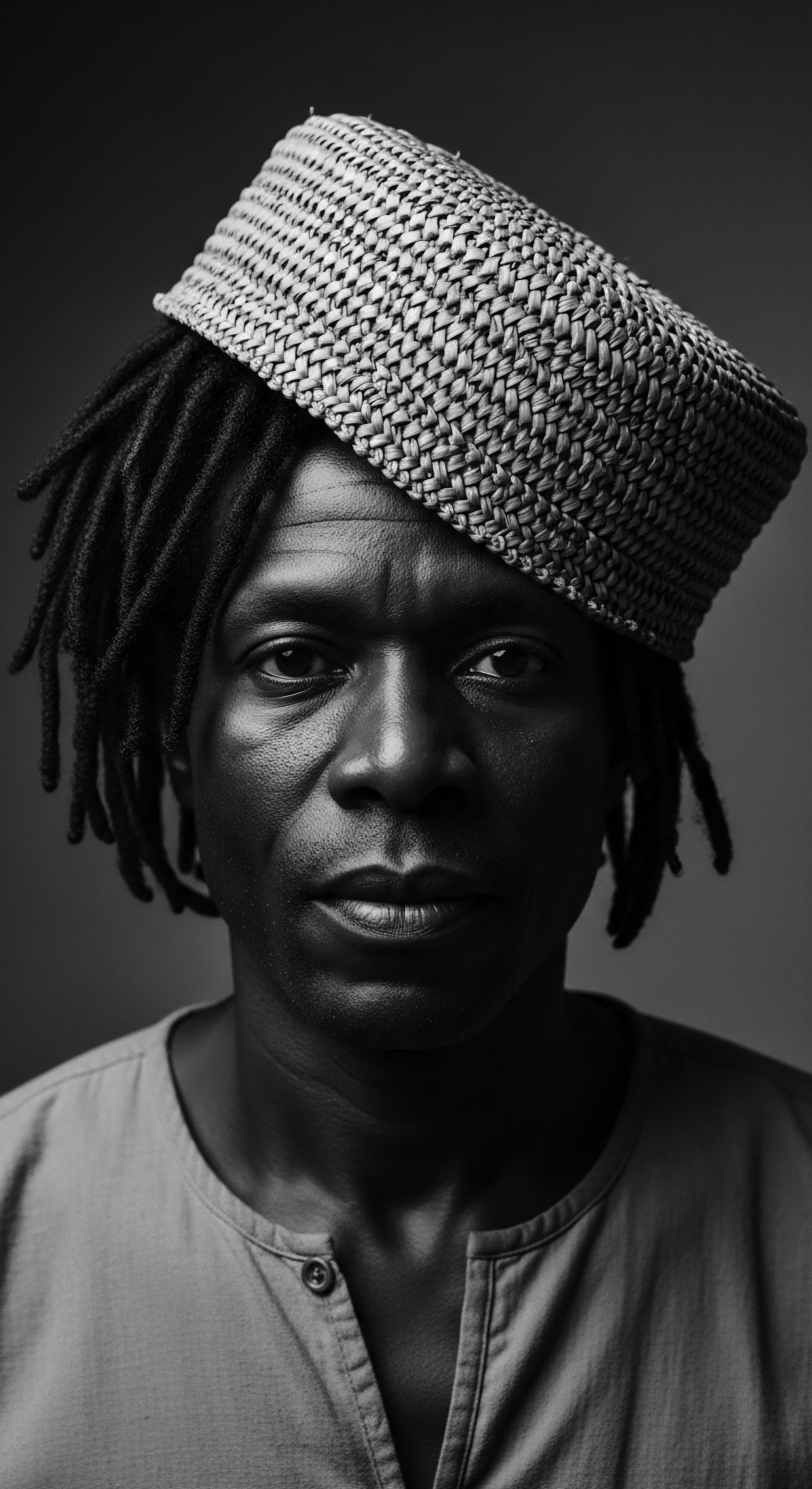
Fundamentals
The Black Aesthetic, at its deepest understanding, represents a profound cultural blueprint, a distinctive lens through which beauty, artistry, and selfhood find expression within Black communities globally. This isn’t a mere collection of styles or a fleeting trend. Instead, it forms a coherent system of values and interpretations, deeply rooted in the historical experiences, ancestral wisdom, and creative resilience of people of African descent. For Roothea, this interpretation finds its most compelling and tactile manifestation in the rich heritage of textured hair.
It is within the intricate coils, the resilient strands, and the ancient practices of Black hair care that the Black Aesthetic truly comes alive. It serves as a visual language, conveying tales of identity, communal bonds, and enduring spirit across generations.
The Black Aesthetic, fundamentally, is a cultural blueprint expressed through beauty and selfhood, vividly alive in the heritage of textured hair, recounting stories of identity and resilience.
Consider the elemental biology of textured hair itself, a marvel of natural architecture. Each strand, with its unique helical twist, possesses a remarkable capacity for volume and form. This inherent characteristic, often stigmatized in historical contexts influenced by Eurocentric beauty ideals, is revered within the Black Aesthetic. It is seen not as a deviation from a norm, but as an inherent source of beauty, strength, and versatility.
This biological reality, the very structure of our hair, echoes ancestral landscapes and rhythms, inviting a connection to the source of our collective being. The definition extends beyond surface appearance, encompassing the spirit with which hair is tended, adorned, and presented.

Echoes from the Source ❉ Hair as Ancestral Tapestry
From the earliest records of human civilization, hair in African societies was never an incidental adornment. It held significant societal weight, acting as a visual testament to a person’s life journey, standing within their community, and spiritual connection. Before the profound disruptions of the transatlantic slave trade, hairstyles served as intricate communication systems.
They revealed marital status, age, tribal affiliation, wealth, and even occupation. Each braid, each coil, each carefully crafted pattern, spoke volumes without uttering a single word.
The physical properties of textured hair allowed for this remarkable versatility. Its coiling patterns provide natural volume and the ability to hold complex braided or twisted forms for extended periods, enabling the creation of these elaborate, culturally significant designs. This inherent trait of Black hair facilitated the development of a complex sartorial language, a practice that linked the individual to their broader heritage and collective identity. The daily ritual of hair care, often a communal activity, became a tender space where knowledge was shared, bonds were strengthened, and the heritage of care was passed from elder to youth.
The spiritual dimension of hair, particularly its position as the body’s most elevated point, also contributed to its profound meaning. Many ancient African communities regarded the head as sacred, a direct portal for spiritual energy and a connection to the divine or ancestral realm. This reverence transformed hair into a conduit of spiritual interaction, influencing practices where hair was meticulously cared for, ritually cut, or adorned to invoke blessings, signify mourning, or mark significant life transitions.
- Hair as Identity Marker ❉ In pre-colonial Africa, a person’s hairstyle indicated their tribe, age, marital status, and social position.
- Spiritual Conduit ❉ Many African cultures believed hair, as the highest part of the body, connected individuals to the divine and ancestors.
- Communal Ritual ❉ Hair styling was often a shared activity, strengthening social bonds and transmitting cultural knowledge across generations.

The Tender Thread ❉ Living Traditions of Care and Community
The Black Aesthetic is profoundly intertwined with the tender practices of hair care. These are not merely grooming routines; they are living traditions, passed down through the ages, reflecting a deep understanding of textured hair’s unique needs and properties. From the earliest times, indigenous ingredients were carefully selected and prepared to cleanse, nourish, and protect hair. These ancestral methods often integrated local botanicals, natural oils, and clays, chosen for their inherent restorative qualities.
Even as societies changed and external pressures mounted, these practices persisted, adapting while maintaining their core reverence for hair. The collective memory of these care rituals, refined through centuries of experience, informs contemporary approaches to Black hair wellness. It reminds us that proper hair care is a holistic endeavor, connecting physical well-being to cultural continuity and self-acceptance.
| Ingredient Shea Butter |
| Traditional Source/Region West and East Africa |
| Traditional Application/Benefit Moisturizing, protecting, and softening hair, often used to seal in moisture. |
| Ingredient Karkar Oil |
| Traditional Source/Region Chad, Sudan |
| Traditional Application/Benefit Promoting hair growth and strength, often mixed with other ingredients like sesame oil and honey. |
| Ingredient Baobab Oil |
| Traditional Source/Region Southern and East Africa |
| Traditional Application/Benefit Nourishing dry hair and scalp, providing elasticity, and addressing breakage due to its rich fatty acid content. |
| Ingredient These ingredients represent a fraction of the vast ancestral knowledge surrounding botanical care for textured hair, underscoring the deep connection between land, healing, and the Black Aesthetic. |
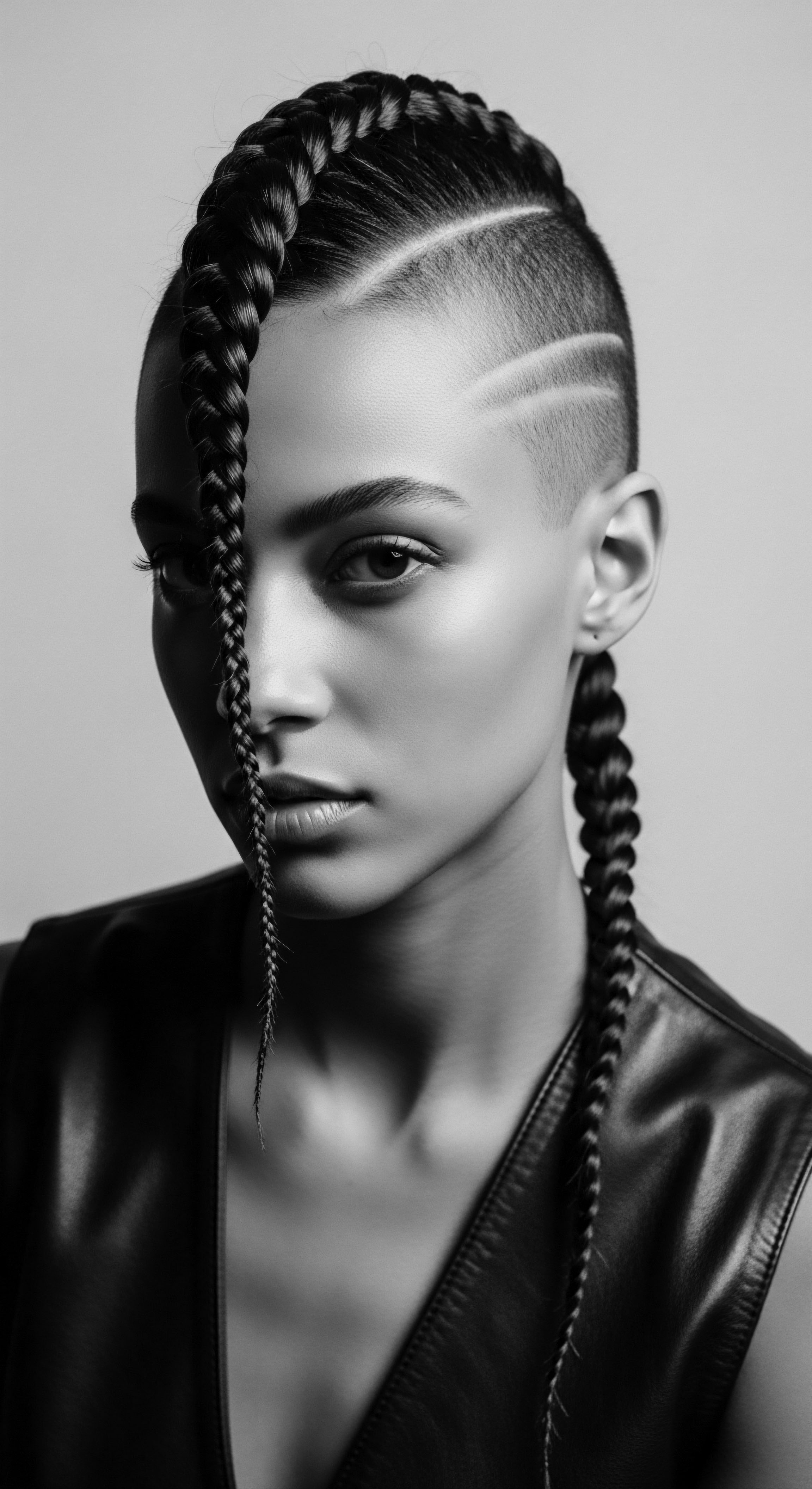
Intermediate
An intermediate understanding of the Black Aesthetic expands beyond its fundamental definition, recognizing its dynamic interplay with historical forces, specifically how it has been challenged, suppressed, and continually reclaimed. The significance of textured hair, which forms a core aspect of this aesthetic, faced relentless assault during periods of enslavement and colonization. This era saw deliberate attempts to strip individuals of their cultural identity, with the forced shaving of heads upon capture serving as a brutal first step in a process of dehumanization. Hair, once a vibrant symbol of lineage and social standing, was redefined by oppressors as “inferior” or “animalistic”.
The Black Aesthetic, particularly through textured hair, endured suppression yet continuously reemerged as a powerful symbol of identity and defiance against oppressive forces.
The imposition of Eurocentric beauty standards created a hierarchy of hair textures, elevating straighter hair as “good hair” and devaluing coily or kinky textures. This systematic degradation profoundly impacted the self-perception of Black and mixed-race individuals, forcing many to adopt styles that mimicked European hair to achieve social mobility or avoid discrimination. The pain and psychological burden associated with this assimilation are central to appreciating the deeper meaning of the Black Aesthetic’s resurgence. It is a testament to the enduring spirit of communities that refused to allow their intrinsic beauty to be erased.
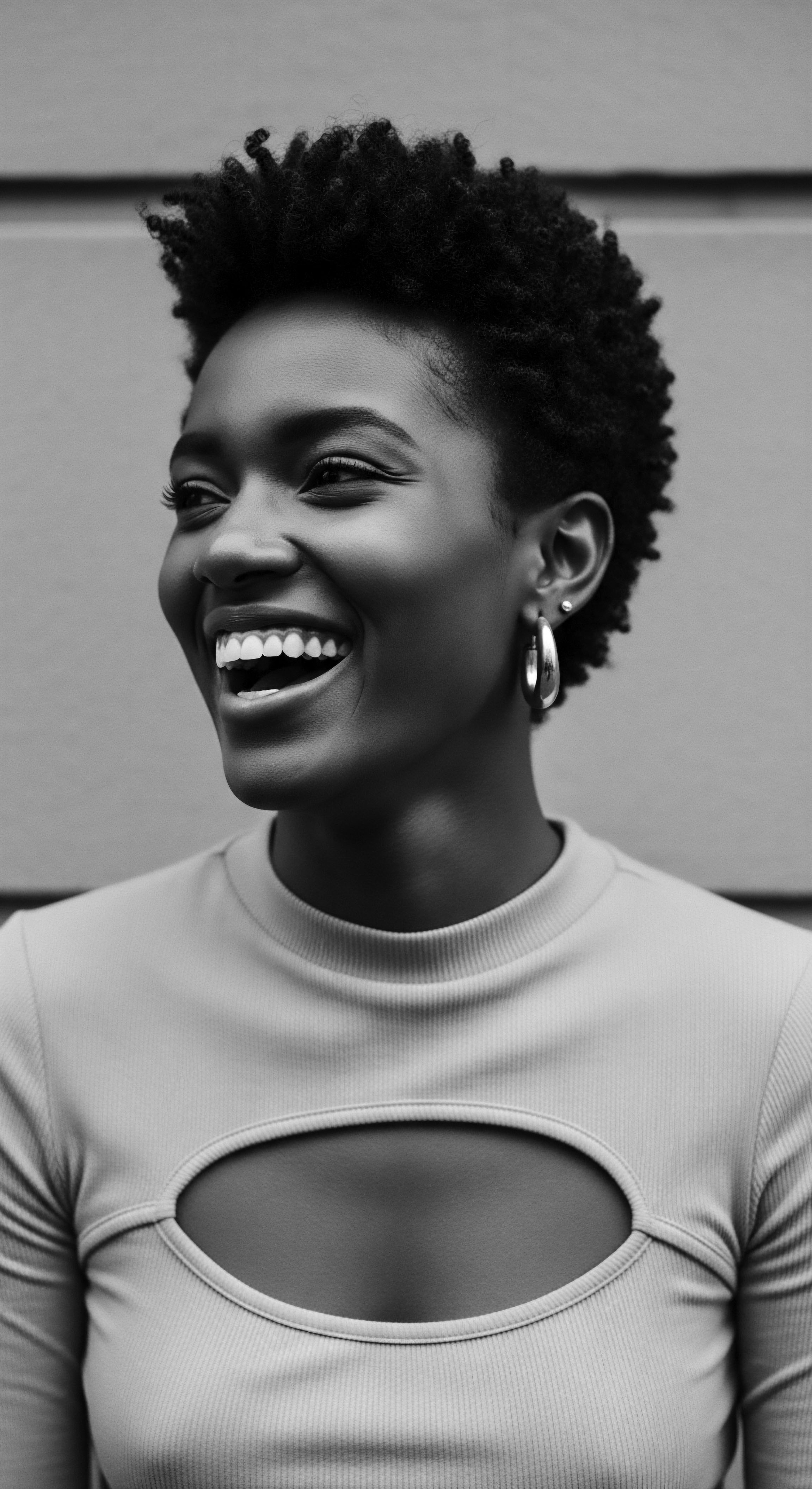
The Unbound Helix ❉ Hair as a Voice of Identity and Resistance
The history of Black hair is replete with acts of profound resistance. Even amidst the unimaginable horrors of slavery, hair remained a powerful, subtle medium for communication and defiance. One compelling, perhaps lesser-known, historical example lies in the ingenious use of cornrow braiding patterns during the transatlantic slave trade. Enslaved African women, lacking maps or writing implements, would intricately braid patterns into their hair that served as literal routes to freedom.
These intricate coiffures were not merely decorative. They were codified systems of knowledge, tracing paths through swamps, identifying safe houses, and marking dangerous territories. Small seeds or even bits of gold were sometimes hidden within the braids, providing sustenance or resources for the arduous journey to liberation. This covert act of resistance, deeply rooted in ancestral braiding traditions, profoundly demonstrates how the Black Aesthetic transcended mere appearance, becoming a tool for survival and a silent declaration of autonomy.
This case study from the Colombian descendants of African slaves illustrates how beauty, cultural practice, and survival intertwined, making hair a living map of defiance. The deliberate choice to maintain or adapt these styles, often at immense personal risk, stands as a testament to the powerful, inherent meaning embedded within the Black Aesthetic.

Reclaiming the Strand ❉ From Survival to Celebration
Following emancipation, the struggle for hair autonomy continued, shifting from covert resistance to a broader fight against systemic prejudice. Laws passed in some regions in the 18th century even mandated that Black women cover their hair in public, an additional attempt to suppress visible markers of African heritage. This historical trajectory led to the rise of hair straightening methods, from hot combs to chemical relaxers, as a means of social assimilation. These innovations, while offering a semblance of acceptance, also caused significant damage to hair and scalp, perpetuating a cycle of seeking acceptance at the expense of hair health and authentic selfhood.
The mid-20th century marked a profound turning point. The Civil Rights Movement and the “Black is Beautiful” era ushered in a powerful cultural awakening, with the natural Afro emerging as an undeniable symbol of pride, unity, and defiance against Eurocentric beauty norms. Figures like Angela Davis popularized the Afro, transforming it into a political statement, a declaration of self-acceptance, and a visible connection to African roots. This period represents a conscious reclamation of the Black Aesthetic, a bold assertion that inherent Black beauty, in its most authentic form, was not only acceptable but magnificent.
This momentum continued into the 21st century with the rise of the modern Natural Hair Movement. Fueled by greater access to information through the internet and social media, this movement has provided a global platform for Black and mixed-race individuals to share knowledge, experiences, and celebrate their diverse hair textures. This period reflects a shift, not solely driven by political statement, but increasingly by a desire for healthier hair practices and a genuine embrace of one’s authentic self.
- Cultural Reclamation ❉ The modern Natural Hair Movement represents a conscious effort to embrace authentic textured hair as a symbol of identity and beauty.
- Economic Shift ❉ The movement has spurred significant growth in the natural hair care industry, indicating a consumer demand aligned with cultural values.
- Community Building ❉ Online platforms foster shared knowledge and solidarity, reinforcing the collective aspect of the Black Aesthetic’s expression.
The Natural Hair Movement’s contemporary wave is not just about aesthetics; it embodies a deeply personal and collective return to ancestral self-acceptance, valuing genuine texture over imposed ideals.

Academic
The Black Aesthetic, from an academic vantage, signifies a complex, evolving epistemology of beauty and self-definition, originating within and perpetually informed by the unique historical and diasporic experiences of Black individuals. It stands as a critical theoretical framework, challenging monolithic Western beauty standards and asserting the inherent value and integrity of Afrocentric forms, narratives, and expressions. This analytical stance requires a deep exploration of its philosophical underpinnings, its sociological implications, and its profound impact on individual and collective identity, particularly as these intersect with textured hair heritage. The meaning, therefore, transcends superficial definitions, delving into systemic structures of power, representation, and self-determination.
Central to an academic understanding is the recognition of the Black Aesthetic as a counter-hegemonic force. It operates as a deliberate assertion of cultural sovereignty against historical forces of erasure and misrepresentation. This is not merely an alternative; it functions as a foundational system of valuing beauty and cultural production on its own terms. Scholarly inquiry examines how this aesthetic tradition both preserves ancestral memory and innovates, creating new forms of expression that resonate with contemporary Black life while holding firm to its roots.

The Socio-Historical Embodiment ❉ Hair as a Site of Theory
Textured hair, within the Black Aesthetic, serves as a quintessential site for interdisciplinary analysis, revealing the complex interplay of biology, culture, and power. Sociological studies consistently demonstrate that hair choices among Black individuals are profoundly loaded, reflecting deeper issues of self-value, community representation, and political consciousness. The very act of wearing one’s hair in its natural state, for centuries deemed “unprofessional” or “unkempt” by dominant societal norms, became a profound act of resistance.
For instance, the economic impact of the shift towards natural hair, while appearing as a market trend, possesses significant socio-historical implications. Consider the data ❉ nationwide perm sales saw a decline of more than 26% since 2008, while sales of natural hair products—such as leave-in conditioners, styling gels, and curl creams—experienced a steady rise. The natural hair care industry in the United States now holds an estimated value of $2.5 billion alone. These figures, on the surface, reflect consumer behavior.
Academically, they signify a powerful re-alignment of economic capital within Black communities, a deliberate divestment from industries historically perpetuating Eurocentric beauty standards (e.g. Madam C.J. Walker initially selling hair relaxers) towards those that affirm and cater to the specific needs of textured hair. This financial shift is a tangible manifestation of the Black Aesthetic in action, demonstrating collective agency in reshaping markets to validate inherent Black beauty.
The decline in perm sales and growth in the natural hair market represent a tangible economic re-alignment towards affirming Black beauty, demonstrating agency within the Black Aesthetic.
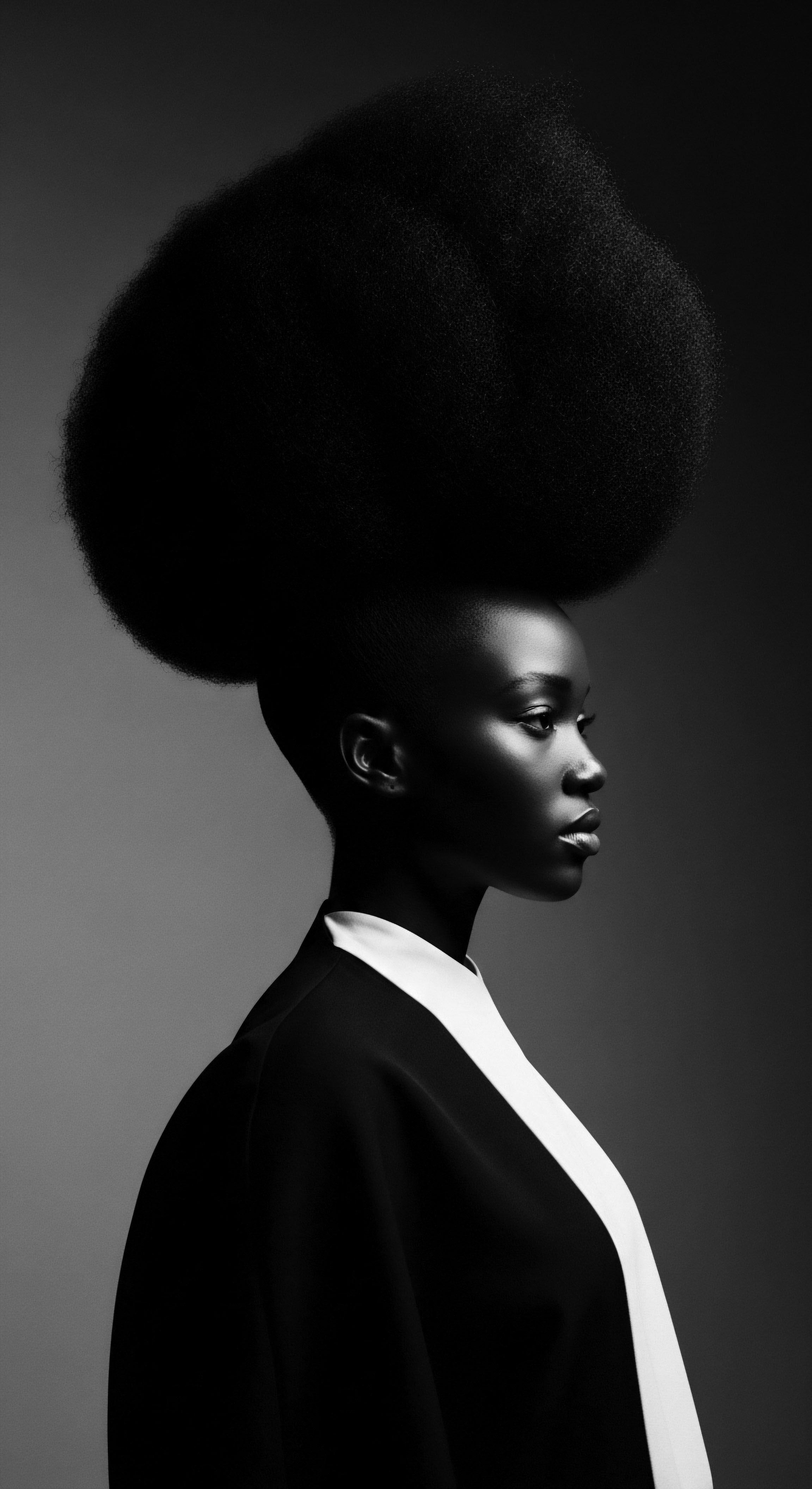
Beyond the Strand ❉ Interconnected Incidences and Cultural Flows
The Black Aesthetic, particularly through its hair expressions, exists not in isolation, but as a living current within broader cultural flows, often challenging and shaping global perceptions. The academic lens allows us to examine how this aesthetic is transmitted, interpreted, and re-interpreted across geographical boundaries and through various artistic mediums. From the nuanced ethnobotanical knowledge of plant-based hair care in specific African communities to the global reach of Black cultural iconography, the aesthetic’s influence is undeniable.
For example, research into the ethnobotany of the Gbaya ethnic group in Eastern Cameroon reveals a rich heritage of plant-based cosmetics, with specific plants like Elaeis guineensis (oil palm), Carica papaya, and Aloe vera extensively used for hair and skin care. A study documented 36 plant species across 26 families used by the Gbaya people for various cosmetic preparations, with seeds being the most frequently utilized part (26.36% of citations). This rigorous documentation of traditional knowledge underscores the scientific validity inherent in ancestral practices and their integral role in the Black Aesthetic.
The pharmacological review of these plants shows they contain diverse phytochemicals—enzymes, minerals, vitamins, alkaloids, phenolic compounds, and essential oils—which are recognized as active cosmetic ingredients today. This reveals a sophisticated, generations-old understanding of natural chemistry, demonstrating that ancestral wisdom was often a form of applied science, directly influencing the hair’s health and appearance, thus shaping the tangible manifestation of the Black Aesthetic.
The implications of this extend beyond local practices. Such studies reinforce the notion that traditional African hair care, far from being primitive, represents a highly sophisticated and sustainable system of wellness. It challenges the historical narrative that posited Western beauty practices as the sole standard of scientific advancement.
The deep understanding of localized flora, their properties, and their application for hair health are central to the Black Aesthetic’s material culture and its enduring legacy. This knowledge, often passed down orally, provides invaluable insights into culturally appropriate hair care solutions that honor both tradition and scientific efficacy.
- Resilience and Adaptation ❉ The Black Aesthetic demonstrates remarkable adaptability, preserving core elements of identity while responding to shifting social and political landscapes.
- Intersectional Analysis ❉ Understanding the Black Aesthetic demands consideration of race, gender, class, and colonial legacies, as these factors deeply shape hair experiences.
- Global Diaspora ❉ The aesthetic serves as a unifying force across the African diaspora, connecting diverse communities through shared practices and symbolic meanings of hair.
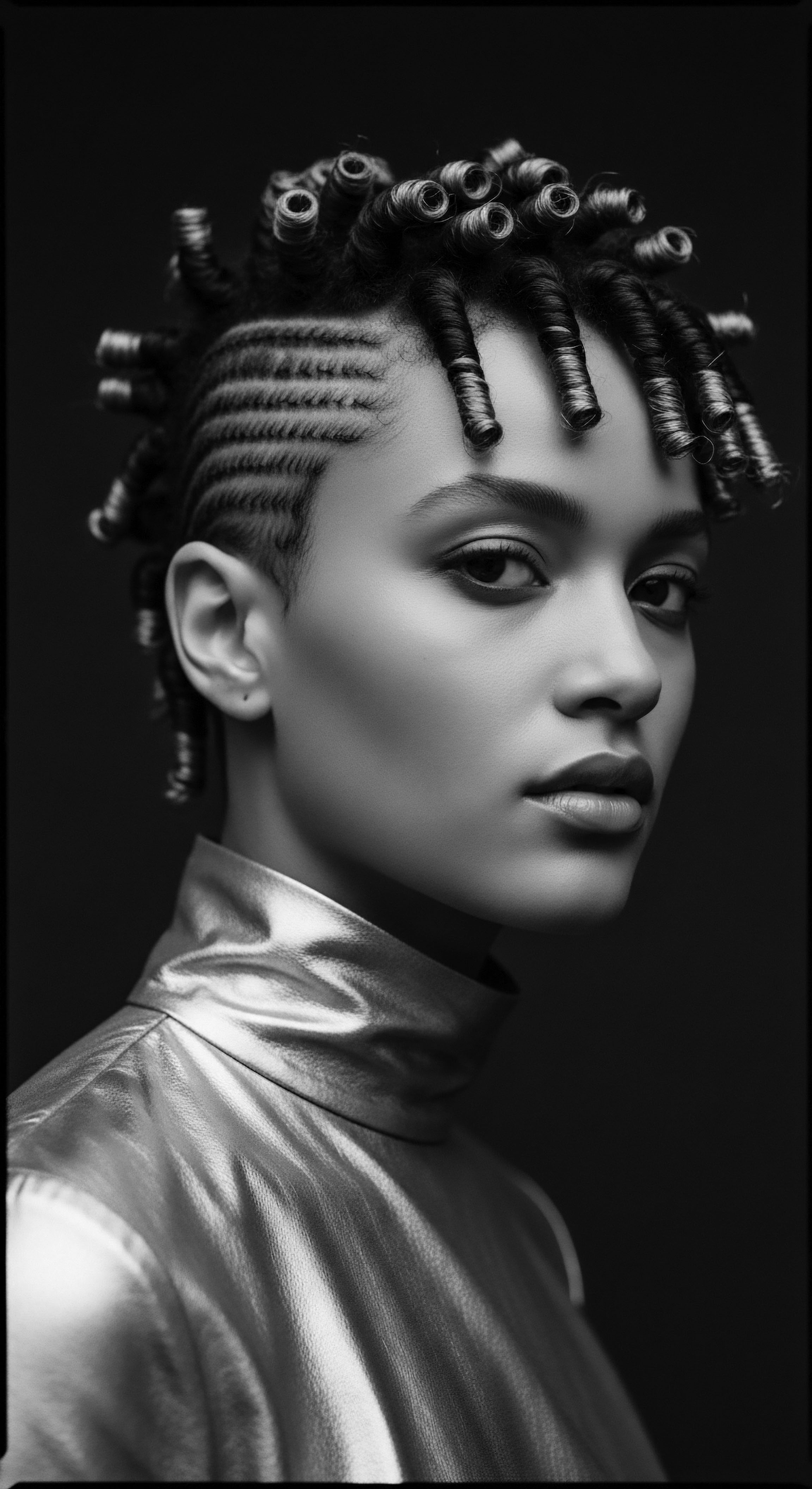
Reflection on the Heritage of Black Aesthetic
The Black Aesthetic, deeply rooted in the journey of textured hair, persists as a testament to the enduring human spirit and the profound resonance of ancestral wisdom. It is a living, breathing archive, etched into every curl, coil, and braid, recounting tales of resilience, ingenuity, and unyielding beauty. From the sacred rituals of ancient African societies, where hair communicated status, spirit, and identity, to the courageous acts of resistance encoded in slave narratives, this aesthetic has continually reaffirmed a sense of self against overwhelming odds.
Our collective path, marked by struggles and triumphs, has forged a legacy of care that recognizes hair not merely as a physical attribute, but as a sacred extension of being, a connection to lineage that stretches back through time. The re-emergence of natural hair as a prominent expression of the Black Aesthetic signifies a powerful homecoming, a collective sigh of relief as individuals reclaim the inherent beauty of their God-given textures. It is a recognition that true wellness—for hair, for spirit, for community—flows from an authentic connection to one’s heritage. This journey underscores that the profound meaning embedded in Black hair will continue to inspire, heal, and shape future generations, echoing the wisdom of those who came before us.
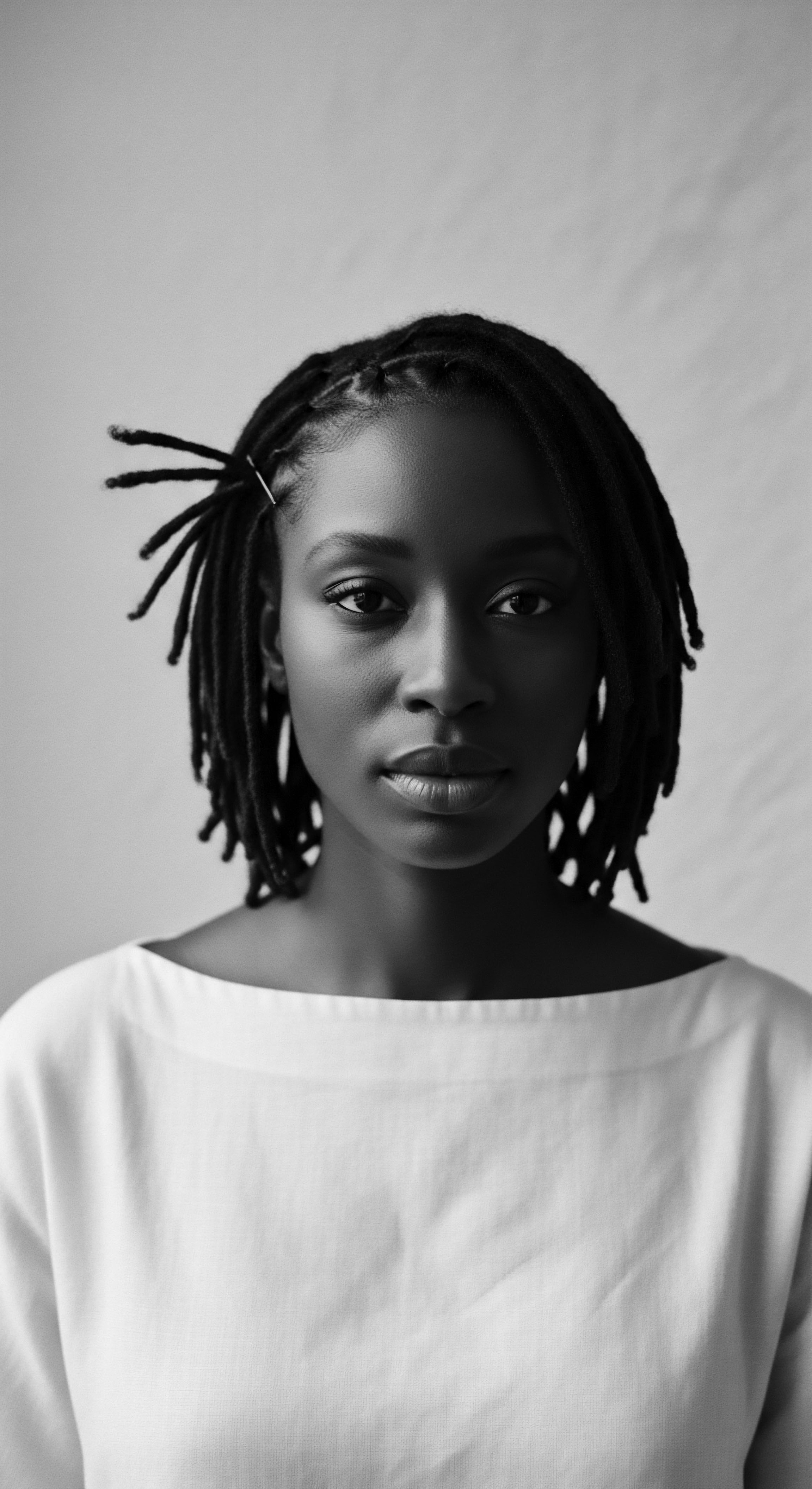
References
- Afriklens. “African Hairstyles ❉ Cultural Significance and Legacy.” 2024.
- CBC Radio. “Tangled Roots ❉ Decoding the History of Black Hair.” 2021.
- Odele Beauty. “6 Things Everyone Should Know About Black Hair History.” 2021.
- The Gale Review. “African Hairstyles – The ‘Dreaded’ Colonial Legacy.” 2021.
- The Kurl Kitchen. “The Cultural Significance Of Natural Hair In Different Communities.” 2024.
- The Kurl Kitchen. “The Natural Hair Revolution ❉ A Market Trend Analysis.” 2025.
- Reflections.live. “How Ancient Hairstyles Were Used to Escape, Predict, and Survive.” 2025.
- BBC News. “How does black hair reflect black history?” 2015.
- Halo Collective. “End Hair Discrimination.” .
- . “The natural hair movement.” .
- Asbury Theological Seminary. “Don’t Touch My Hair ❉ Examining the Natural Hair Movement Among Black Women.” 2022.
- JSTOR Daily. “How Natural Black Hair at Work Became a Civil Rights Issue.” 2019.
- HomeTeamHistory. “The History Of African Hair Culture.” 2019.
- Quora. “How did black people do their hair in Africa before slavery began?” 2017.
- Oxford Research Encyclopedia of African History. “Women in Beauty Cultures and Aesthetic Rituals in Africa.” 2023.
- AMAKA Studio. “The History and Culture of African Natural Hair ❉ From Ancient Times to Modern Trends.” 2023.
- MDPI. “Cosmetopoeia of African Plants in Hair Treatment and Care ❉ Topical Nutrition and the Antidiabetic Connection?” 2024.
- ResearchGate. “Cosmetopoeia of African Plants in Hair Treatment and Care ❉ Topical Nutrition and the Antidiabetic Connection?” 2024.
- Know Your Hairitage. “African Culture.” .
- ResearchGate. “Ethnobotany and pharmacognostic perspective of plant species used as traditional cosmetics and cosmeceuticals among the Gbaya ethnic group in Eastern Cameroon.” 2024.
- Scribd. “1 s2.0 S0254629917304076 Main.” 2017.
- Ethnobotany Research and Applications. “Plants used for hair and skin health care by local communities of Afar, Northeastern Ethiopia.” 2025.
